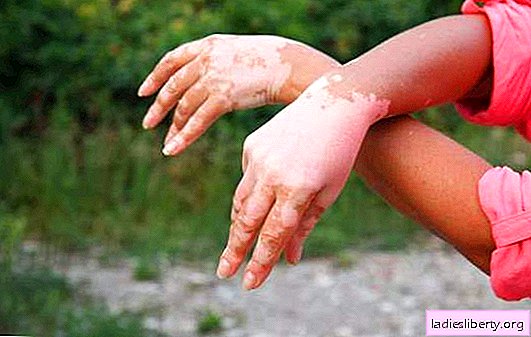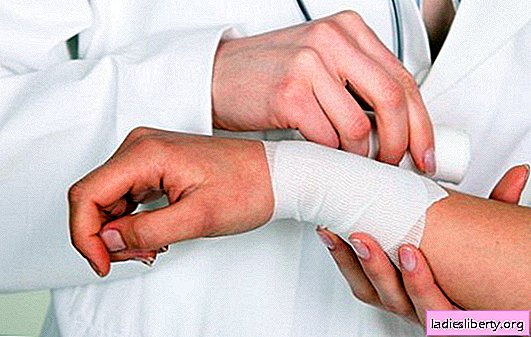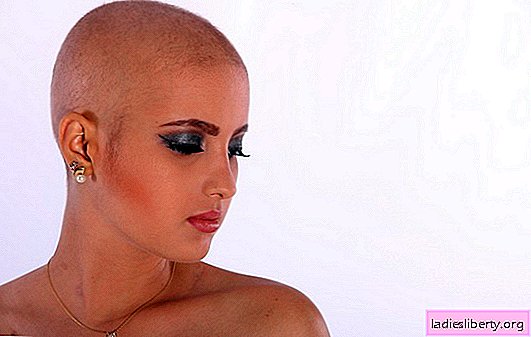
Vitiligo is a special skin pathology and is expressed in the disappearance of the pigment melanin in some parts of the dermis. Problem spots give the owner psychological and aesthetic discomfort and are constantly accompanied.
What leads to the disease, and whether there are ways to treat vitiligo, we will consider further.
The main causes of vitiligo
If white spots appear on the skin, then vitiligo develops. Doctors often call this ailment “leukoderma”. Melanin is responsible for the color of human skin. And if it is in excess in the body or it is not enough, pigmentation begins to change. The problem occurs mainly in the younger generation up to thirty years old, but there have been cases when vitiligo appeared during menopause. Pathology occurs on average in 3% of the world's population and can be inherited. Spots are clearly visible on a tanned body, so the carriers of this disease try to avoid the sun. Which is right, because in these white areas of the skin there is no melanin, and ultraviolet radiation can cause burns.
The main causes of vitiligo are still not fully understood. There are various medical theories. Some doctors claim that vitiligo is a symptom of the disease of the whole organism, and light areas of the skin are a symptom of pathology. Of course, everything is interconnected in the body. And problems in one body will always contribute to disturbances in others. The main reason is a lack of melanin. When cells stop producing it, a malfunction begins.
The alleged causes of vitiligo:
• disturbances in the immune system. When there are various pathologies in the body, its work is disrupted and the production of the necessary antibodies for protection does not occur, or control over the work of antibodies is violated, healthy tissue is damaged. Especially often vitiligo appears if a person suffers from diabetes, rheumatoid arthritis, psoriasis, lupus erythematosus, thyroid disease;
• hereditary factor. The disease can be transmitted genetically. It was also revealed that people with brown eyes are more prone to this ailment than holders of gray and blue eyes;
• stress and mental trauma. Stressful situation provokes the loss of melanin. It is enough to recall how a person quickly turns gray after a difficult psychological situation;
• thyroid disease. On average, 10% of people diagnosed with vitiligo have thyroid disorders (hyperthyroidism, goiter, hypothyroidism);
• diseases of the gastrointestinal tract;
• intoxication;
• work in hazardous industries;
• chemical exposure. Disrupt the production of melanin can also chemicals, for example, phenol. This often happens when using cosmetics of poor quality;
• medicines. A number of drugs can destroy melanin. For example, antibacterial drugs that destroy the intestinal microflora, and the body cannot receive important vitamins in full;
• physical injuries. Light spots can occur at the site of cuts, burns, bruises, or severely torn skin.
Symptoms and methods of diagnosis
The main symptom of the disease is white spots, around which there may be a border. They are located symmetrically and can occur anywhere: on the hands, on the face, on the stomach, on the legs, around the eyes and lips, on the genitals. If vitiligo appears on the head, then the hair will also bleach. Depigmentation has only a visual effect, there is no pain. The spots are very sensitive to ultraviolet radiation, so you need to be less in the open sun, because the skin becomes completely unprotected.
At the beginning of the disease, there are no symptoms, only mild itching can be felt. The disease can progress. Cases where spots disappear on their own are quite rare. A dermatologist can diagnose the disease. To confirm the diagnosis, you need to undergo an examination in the rays of the Wood lamp. Additionally, a biopsy, blood and urine tests can be prescribed.
Vitiligo in children
In children, vitiligo looks the same as in adults. The disease is amenable to therapy, the best result is treatment with ultraviolet light. In adolescence, when the appearance is given great importance, stress and ridicule from peers can contribute to aggravation of the disease. In addition to genetics and stressful situations, another risk factor for the development of the disease is poor ecology.
Vitiligo in children often appears on one part of the body. This is the so-called segmental form of the disease. There is also a generalized form when spots are located symmetrically on the right and left parts of the body. It happens that before the onset of the disease, the child has itching, pink spots and tingling. More often girls are ill.
In the process of treating this disease in children, it is very important to completely restore the impaired metabolism, since metabolic failure leads to insufficient production of melanin. To maximize the effect, the approach should be comprehensive. The doctor prescribes a number of medications and ultraviolet radiation. Photosensitizing therapy aims to limit the effect of direct sunlight on depigmented skin of a child. For this, sun creams and other cosmetics are used. Multivitamins and mineral complexes, immunocorrection drugs and antioxidants can also be prescribed. If conservative treatment does not produce the desired effect, surgery may be prescribed.
Vitiligo treatment: methods and tools
When white marks appear on the skin, the question immediately arises of how to treat vitiligo. First of all, you need to visit a dermatologist. The doctor will diagnose and identify the form of the disease, select a method of therapy and prescribe medications. This is very important so as not to confuse vitiligo with another skin ailment, so that erroneous treatment does not aggravate the situation.
The disease is not dangerous. But with a thorough examination, metabolic problems are often identified. This is evidenced by psoriasis, baldness, dysbiosis, imbalance in the work of the nervous system. Statistics show that the prognosis of therapy for this pathology is not positive. But there are people who defeated the disease, so you need to follow all the doctor’s instructions. You will have to spend a lot of time on treatment, but the pigment will not be restored completely and evenly. Exposure alone will not be enough. It will also require therapy and the underlying disease.
Vitiligo treatment includes the following methods:
- PUVA therapy, when the affected areas of the body are irradiated with ultraviolet light of a certain intensity. The method involves the use of externally or internally photosensitizing drugs that improve the perception of ultraviolet radiation. After a few hours, ultraviolet radiation of a general or local type is carried out. If everything goes well, after a few sessions, pigmentation in the affected area normalizes;
- treatment with hormonal drugs. This type of therapy is aimed at normalizing immunity. If the spots are located locally, then hormonal ointments with an average activity of three months are used for treatment. If an unpleasant ailment does not disappear, stronger hormonal creams will be required. When spots are located throughout the body, hormone pills are prescribed. Any drug can be taken only as directed by a doctor;
- the use of a helium-neon laser for irradiation;
- microwave resonance therapy. Most patients experience an improvement after a couple of sessions;
- dieting as a therapy to restore all metabolic processes in the body. The diet should include seafood, lamb, tomatoes, oats, corn, rice, apples, cod liver, cabbage;
- herbal medicine, which includes the use of herbal tinctures and decoctions. The result can be seen after at least six months;
- treatment with an excimer laser, the result is noticeable after six procedures;
- skin whitening to reduce the contrast between healthy and depigmented skin;
- transplantation of pigment cells from healthy skin.
How to treat vitiligo: preventative measures
How to treat vitiligo extra? For complex therapy, it is necessary to normalize the hormonal background, prevent contact with chemicals that can contribute to the appearance of white spots, take vitamins and minerals in addition, try to avoid stressful situations, and ensure that helminthic invasions are absent in the body.
As a preventive measure, it is useful to harden the body and conduct general strengthening measures. It is very important to monitor nutrition. In the diet should always be fresh vegetables and fruits, herbs. And from bad habits, for example, smoking is better to give up. Since they help weaken the immune system.
It should be remembered that you can not self-medicate. The method of therapy can only be selected by a qualified specialist. The main thing is that he will turn to him in time to prevent the spread of the disease to different parts of healthy skin.











